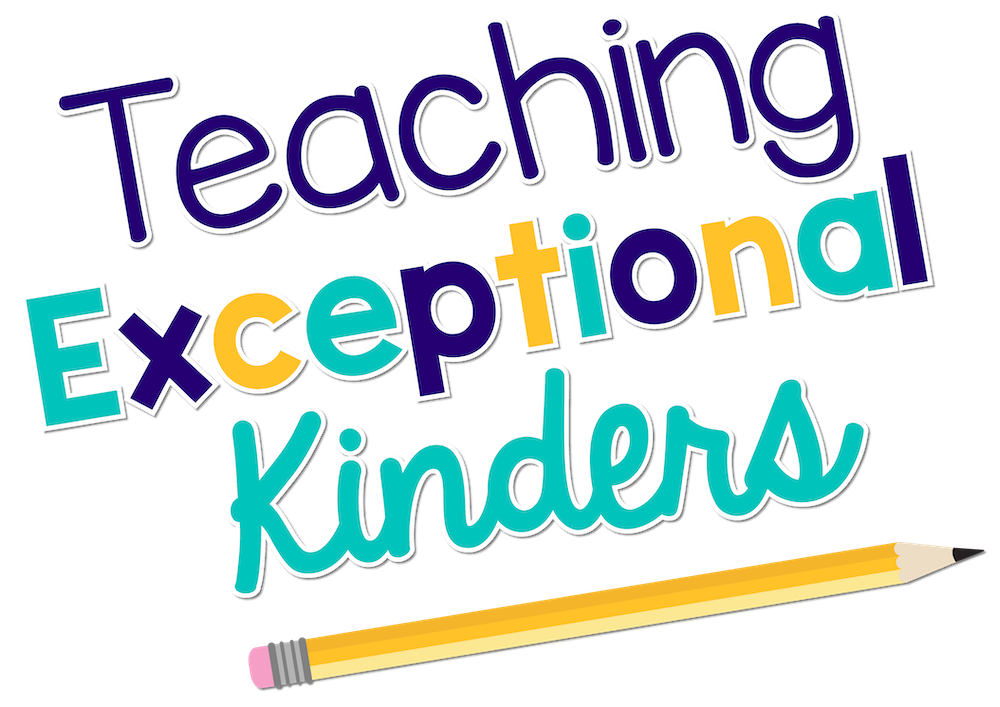Tips for Dealing with Challenging Classroom Behaviors in Kindergarten
If I had to take a guess, I’d say that one of the biggest challenges you face as a kindergarten teacher is dealing with behavior. You often feel like you’ve finished a marathon by the time you’ve made it through a day of teaching while responding to challenging classroom behaviors! If this sounds familiar, keep reading! I’m sharing some of my favorite tips for addressing disruptive behavior in kindergarten.
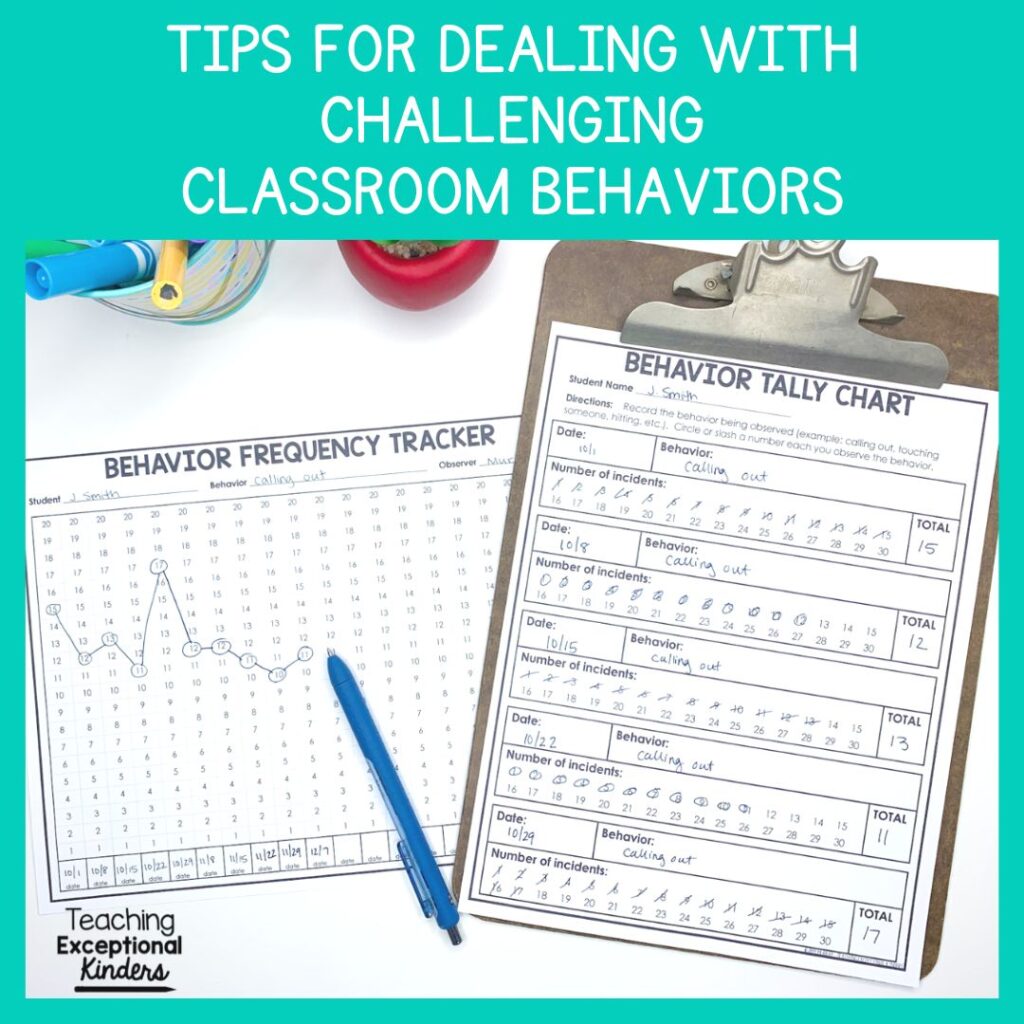
6 Tips for Addressing Challenging Classroom Behaviors
Young kindergarten students are figuring out how to navigate a classroom setting while also learning new skills and concepts at lightning speed. It’s no wonder that they have moments when their behavior is a bit off the mark! The goal is to address these behaviors effectively so they don’t persist. Here are six tips for doing just that:
1. Build Relationships from Day One
This is the number one tip because it is the foundation for behavior management. All of the other tips in this post won’t make a world of difference if you haven’t taken the time to build relationships with your students. The strategies for dealing with challenging classroom behaviors work best in an environment of trust and rapport.

In addition to building relationships with your students, be sure to find ways to connect with your students’ families. They are part of the team and can be a great support and also a source of knowledge when you need to troubleshoot behavior challenges for individual students.
2. Make Positive Contact Home as Much as Possible
One way that you can support your relationships with students and their families is by making positive contact home as much as possible. You don’t want families to only hear from you when there is something negative to report. When students who tend to exhibit challenging classroom behaviors are able to bring home a positive note, it can have a great impact!
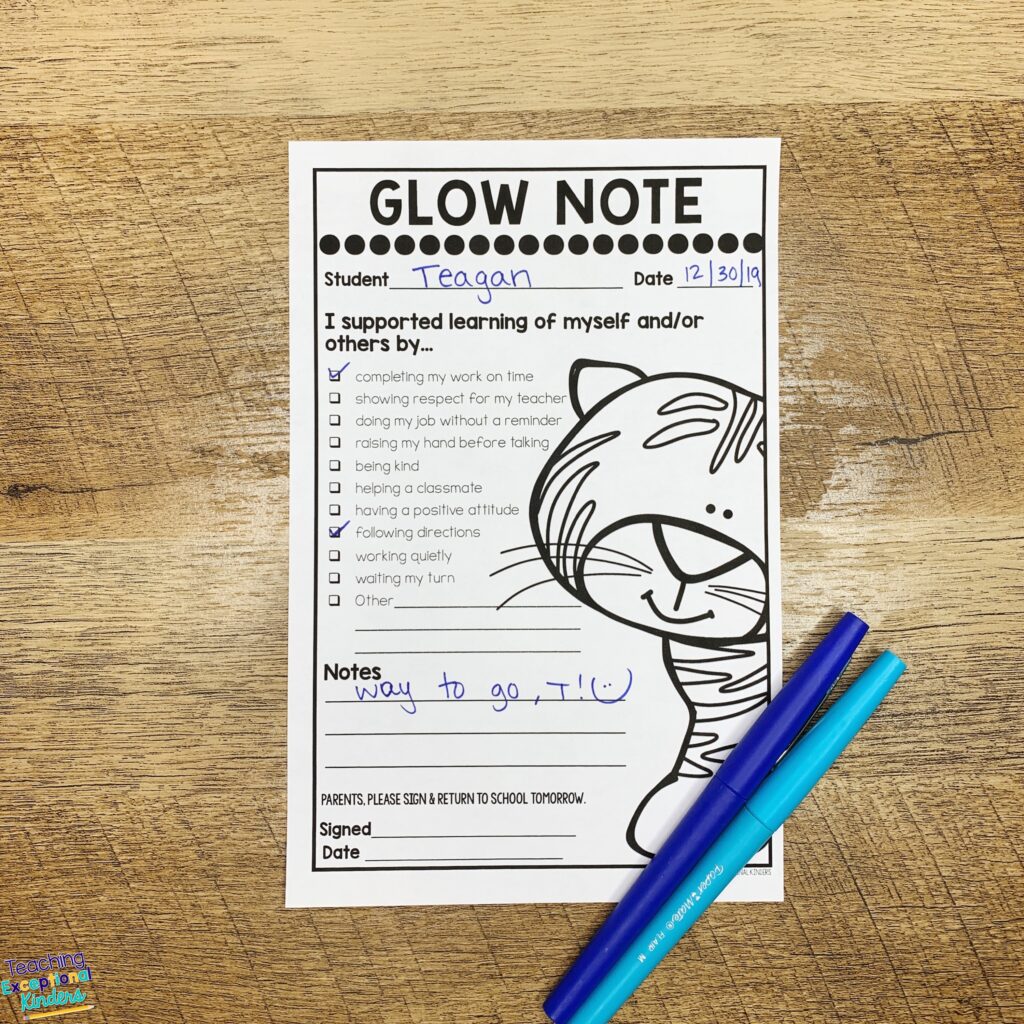
Consistently sending home positive feedback can seem like a daunting task with everything on your plate. Choose a method of communication that is simple and easy for you to keep up with. My favorite tool for sharing positive feedback is a glow note. It’s as simple as filling out the child’s name, checking a box or two, and adding an optional note. This one simple note can make a huge difference in your classroom!
3. Use a Whole Class Incentive
A whole class incentive can encourage students to work together to earn a reward by exhibiting a target behavior. You can strategically choose target behaviors that will address some of the challenges you’re noticing in class. For example, if you have a very talkative class, you could choose a class goal of walking quietly in the hallway. This gives you another opportunity to add positive reinforcement to your daily routine as you acknowledge the class for working toward that goal.
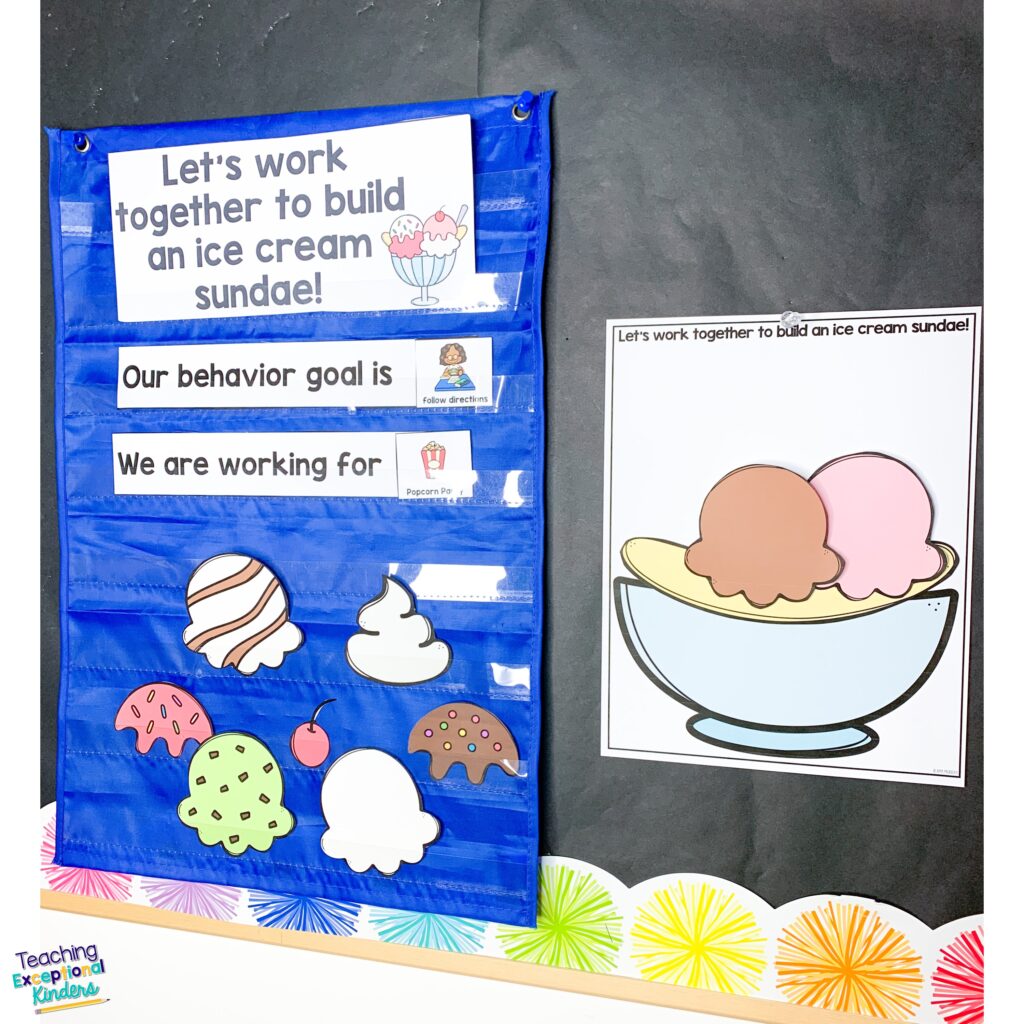
My Build-a-Reward charts are simple and effective for encouraging positive behavior. Instead of waiting for the entire class to exhibit the target behavior before they earn a piece of the puzzle, you can call out individual students who are doing a good job. Be sure to watch for your students who tend to have difficulty with the target behavior. When they get a chance to add a piece to the class reward system, it motivates them to keep up the good work!
4. Try Individual Behavior Charts
There will likely be students in your class who have trouble buying into a whole class reward system. In these cases, it’s helpful to try an individual behavior chart. There are many different options to choose from, so you can decide which would work best in each situation. The most important thing is that you are consistent in providing feedback and rewards for whatever method you choose.
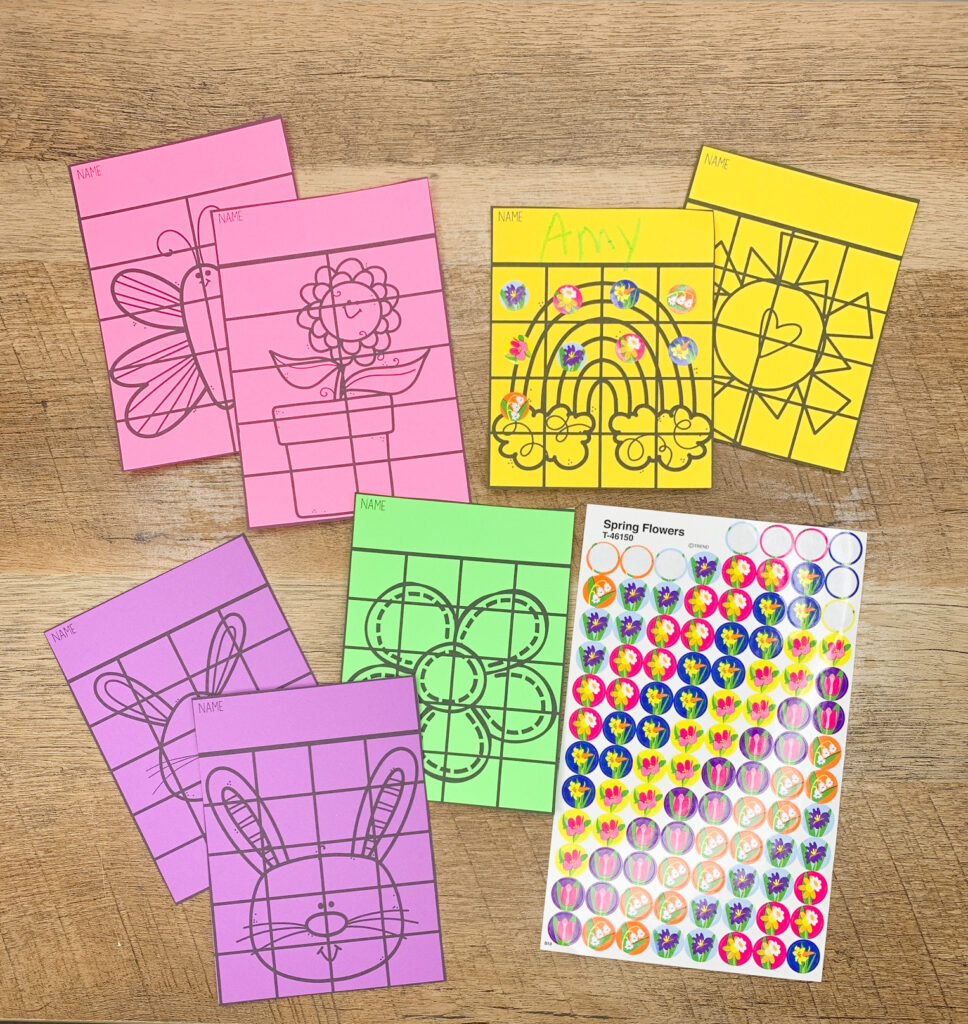
My favorite individual reward systems are sticker charts and token boards. They are simple to use, so it’s easy to be consistent. Plus, you can easily customize them based on your students’ interests. For example, you can use different stickers or tokens with the student’s favorite animal. Be sure to check out my blog posts with tips for using sticker charts and token boards effectively.
5. Ask for Help
When students are regularly misbehaving in class, it can be easy to feel like you’re failing in some way. While it’s helpful to reflect on your classroom management strategies, don’t fall into the trap of thinking you’re a failure if a student is acting out in class.
Reach out to the different supports available in your building. Whether it’s administration, a school counselor, specialists, or fellow teachers, you have access to many people who can help you troubleshoot the situation. You can also reach out to the student’s parents for support and suggestions. They might tell you about one of their child's favorite activities that you can add to the reward rotation!
6. Document Everything!
Be sure to document the challenging behavior in your classroom. This allows you to look for patterns and identify the function of behavior. When you have a better idea of why the behaviors are occurring, it’s easier to find solutions.
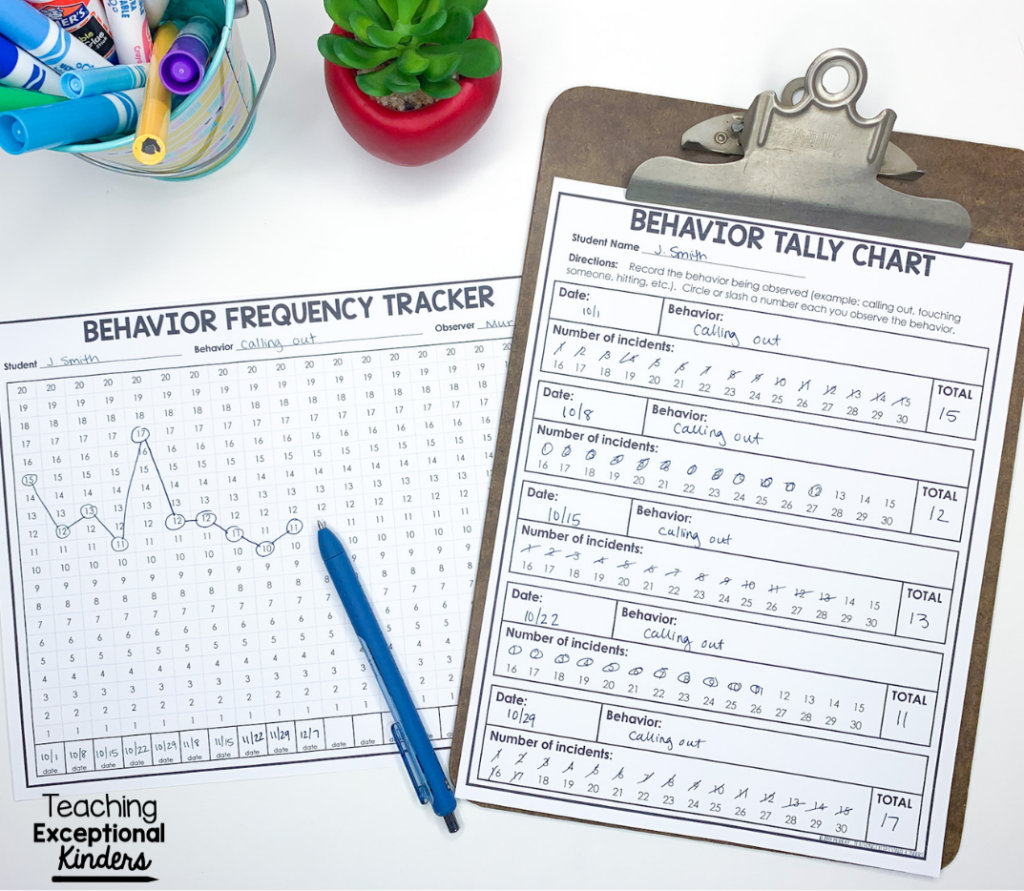
Documentation is also helpful when the disruptive behavior persists after all of your other efforts. You’ll have a stack of data to take to a multidisciplinary team or to a parent conference where you discuss other behavior interventions needed for the student.
Documenting Challenging Behavior in the Classroom
I have compiled a time-saving bundle to make it easier for you to document challenging classroom behaviors and encourage positive behavior. It includes documentation tools, self-regulation strategies and visuals, individual reward charts, and more! Many of these tools are editable so you can customize them for your needs. Head over to the Teaching Exceptional Kinders shop or TPT to take a closer look at this behavior documentation bundle.
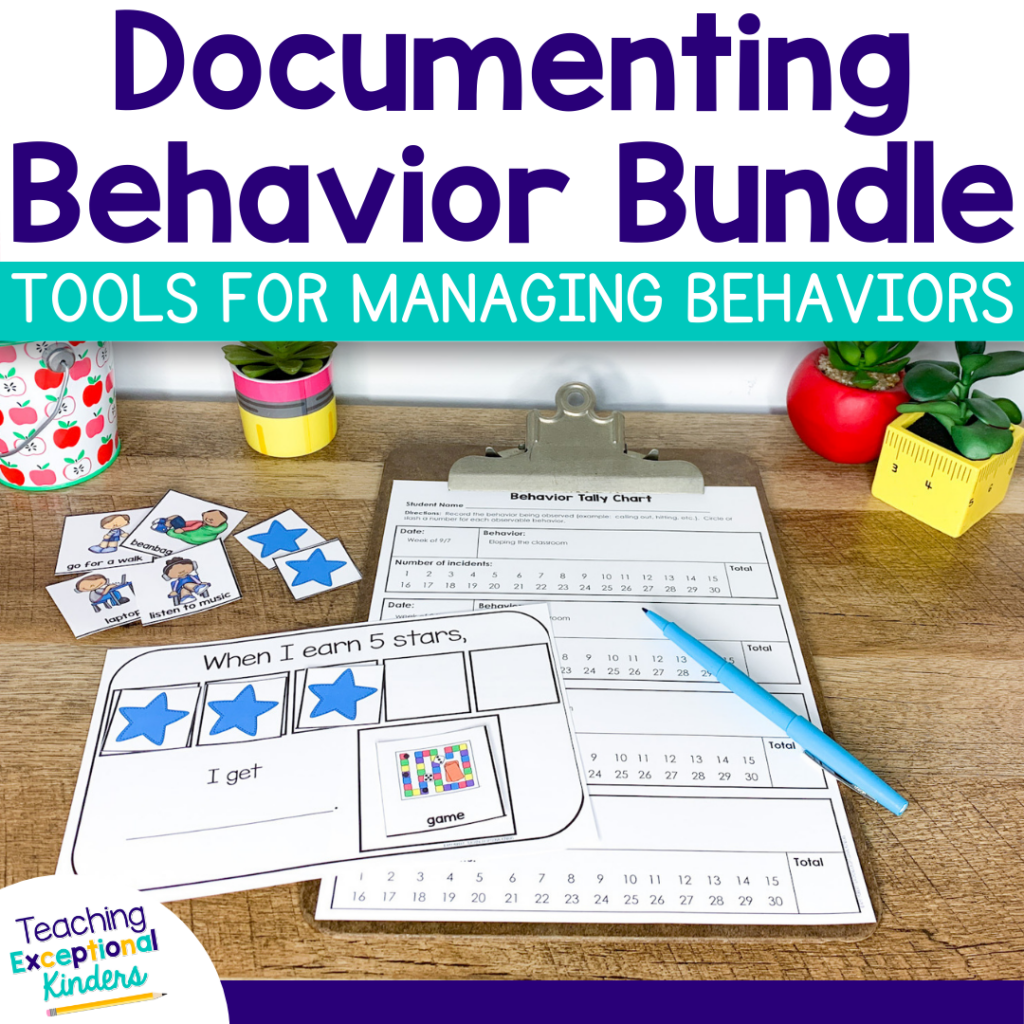
Save These Tips for Challenging Classroom Behaviors
If you’d like to come back to these tips, be sure to save this post! Just add the pin below to your favorite teaching board on Pinterest. You’ll be able to quickly find this post when you need some tips for dealing with challenging classroom behaviors.
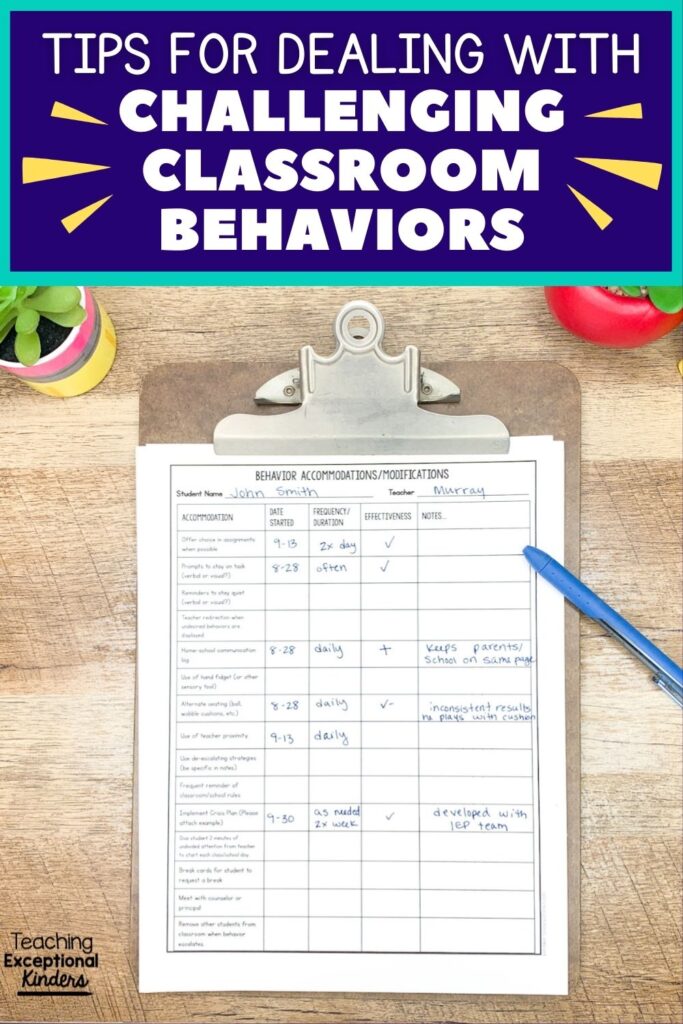
Amy
SITE DESIGN BY LAINE SUTHERLAND DESIGNS

